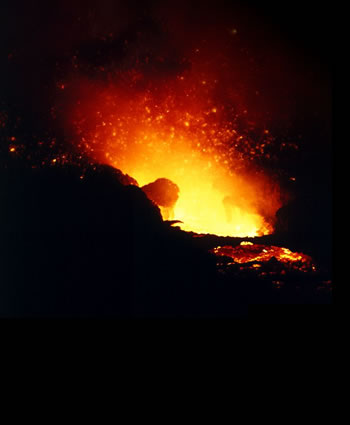Recalibration Samples (R)
When calibrating spectrometers (AES, XRF) with calibration samples, recalibration samples (setting-up-samples) are measured a number of times in order to obtain a reliable nominal value suitable for the calibration. The additive and/or multiplicative changes in spectrometer intensity give rise to variations of the calibration curve in the linear scale of the coordinate system. In order to trace (calculate) the actual intensities at any subsequent time for the nominal intensities produced during calibration, it is necessary to have, for each analysis channel, a low intensity (low point LP) and a high intensity (high point HP). IN metal analyses, the low points for all analyses channels are often measured with the pure metal (Fe, Al, Cu etc), which also has disadvantages.
The high points are usually measured with synthetically combined, highly homogeneous and highly precise samples with as many elements as possible. The synthetic combination is given as an approximate analysis, and the samples frequently do not lie on the calibration curves.
The mathematical procedure of recalibration, which is automatically calculated by modern spectrometer is:
LP nom = a+ b LP act
HP nom = a + b HP act
From these two linear equations a and ba are calculated, and applied as follows to the measured intensity I act of the unknown sample:
I nom = a+ b I act
When using recalibration samples it is not always quaranteed, even if the sample number is the same, that the new sample will correspond exanctly to the sample which is to be replaced. It is therefore recommended that at least 3 sets of reclibration samples should be procured when buying a spectrometer. If recalibration samples are to be replaced with others which habe the same coding, new nominal recalibration values should be determined with the spectrometer as follows:
Very careful recalibration (with new grinding paper, clean grinding wheel, sharp turning pool, reversing plates etc.) has to be performed, with numerous sparkings (min. 6 preferably more) on the recalibration samples which are in use and which have to be replaced. The new recalibration samples are then measured, with numerous sparkings (min. 6, preferably more) using the "reclaibrated intensity ratios" programme. The values obtained are in the new nominal recalibration values which have to be entered automatically in the coresponding table and stored in the data base.
If recalibration samples have to be replaced with others which have a different coding (eg C and D replaced with RN 13 and RN 14), the procedure described above must be carried out in order to determine the nominal values for the new recalibration samples.
Recalibration frequency is instrument- and application- specific. Instrument-specific means that recalibration must be carried out at different intervals even if instruments are of identical design (mainly because of differences in the stability of phototubes, on which the spectrometer manufacturer can only exert influence by a selection process) and they have the same application (and stability limits). Application-specific means that, for the same stability, recalibration frequency depends on preset quality limits. Thus the limits for metal producers (eg. if the lower end of the concentration range is to be set for expensive alloy elements) will be tighter than for metal processors who often just wish to identify the type of material - its quality number.
It is now possible to produce recalibration samples with exactly identical composition (in a limited quantity). "Rolling recalibration" is then feasable, which significantly improves the longt-time accuracy of the spectrometer.

